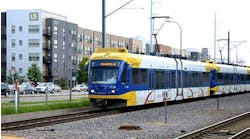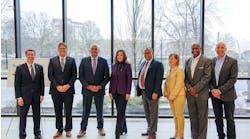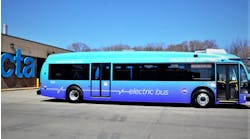SAFETEA-LU has been extended until December of this year. Lack of reauthorization is focused on the $500 billion price tag, which many believe cannot be funded without a hike in the federal gas tax, and no politician interested in getting elected wants to discuss increasing taxes until well after elections, even if it means jobs.
Perhaps the most frustrated politician is the House Transportation and Infrastructure Committee Chairman James Oberstar (D-Minn.). In June of last year, just one day before Oberstar was scheduled to release his committee’s ambitious bipartisan blueprint of the next generation of transportation, Secretary of Transportation Ray LaHood swept in and announced he had just met with lawmakers and asked for an 18-month extension on reauthorization. The plan is indeed ambitious, budgeting $337 billion for investment in highway construction, $100 billion for public transit and $50 billion for a nationwide high-speed rail service. Another $13 billion would be used for smaller programs.
It’s not clear if Oberstar knew about LaHood’s activities and he certainly did not postpone his planned unveiling of the new bill that included a white paper advocating his committee’s plans and making it clear that any extension would be blocked. His hope was to force congressional leaders to come to the table and pass a bill before it expired. Unfortunately, a Cabinet appointee trumps a Congressman and LaHood won, but he didn’t get the 18-month extension he had hoped.
Congressman Tim Walz (D-Minn), sits on the Transportation and Infrastructure Committee and has openly criticized the stalling of the bill. "We are spending $70 billion to idle," says Walz referring to the cost to businesses for current road congestion. "This is as big a failure for not moving this forward as anything else that's happening now."
Walz and others see the bill as a way to increase employment as stalled projects undermine business sectors and industries halting production and work from the mass transit sector to the heavy equipment manufacturing industry.
“I've strongly supported the chairman's efforts to move this bill forward and pass a final transportation bill. Passing a new transportation bill will create jobs in the short and long term, helping us to grow a more sustainable economy where new, small businesses can flourish. Business, labor, safety and environmental groups all agree: the time for a new surface transportation bill is now. Congress needs to pass a bill right away,” Walz says.
Why the Hold Up?
Money. Currently, the only avenue being offered to fund the Highway Trust Fund is to increase the federal gas tax, currently at 18.3 percent and 18.3 is only the tip of the iceberg. States assess their own tax. According to the American Petroleum Institute, the average tax on a gallon of gas is 47.7 cents. States like California (67.4) and New York (63.2) have the highest fuel tax and those states are important to political parties.
At today’s rate of unemployment, it would be a tough sell anywhere, even if it could mean hundreds of thousands of jobs.
Walz, who is currently up for reelection, discounts the obvious election conundrum.
“I believe new surface transportation legislation is critical,” says Walz, “and that politics and an election shouldn't stop Congress from having a good debate and passing legislation that will create jobs and make our roads and bridges safer. I'm ready to have that debate and work with the many supporters of moving a bill, from business groups to labor organizations, to get the job done.”
But even Walz will find it hard to push a bill that lacks obvious funding. The surface transportation bill is a casualty of a rising deficit and a multibillion dollar stimulus plan that has yet to get traction.
“I firmly believe Congress should move to enact a bill before the current extension of the previous surface transportation law (SAFETEA-LU) expires at the end of this year,” adds Walz. “I will continue to push my colleagues to enact a bill this year, because it will mean more jobs in the short and long term, right here in the United States.”
If and when the bill does start moving, the President is focused on high-speed rail, setting aside $50 billion based on the current plan.
“In 2009, Congress and the President invested heavily in rail, laying out a clear vision of an America where workers and tourists alike can use high-speed passenger rail [service] to travel the country cheaply and efficiently. In future funding bills, Congress will need to build on this investment, continuing to fund rail projects that are well-planned and meet a demonstrated need for high-speed, long-distance transportation.”
Walz has been helping to guide the legislation as it relates to rural America. Nearly 30 percent of his state’s population lives in rural, farm communities where transportation could mean an easier and more efficient way to market.
“Any new transportation bill needs to invest heavily in our country's transportation infrastructure, providing badly needed funding to maintain and expand our roads, bridges, transit systems and passenger rail systems. I've introduced legislation, which was partially included in Chairman Oberstar's first draft, to give rural America more of a say in transportation planning,” says Walz.
Walz also suggests that any new projects need to be completed within a few years, not more than a decade which is currently the norm for many projects.
“More than anything, I think the transportation industry needs a new surface transportation bill that provides needed funding, lays out a clear long-term vision and makes it easier to build projects quickly and efficiently. I'll keep pushing my colleagues to move such a bill this year.”
It will be tough. Stay tuned.


